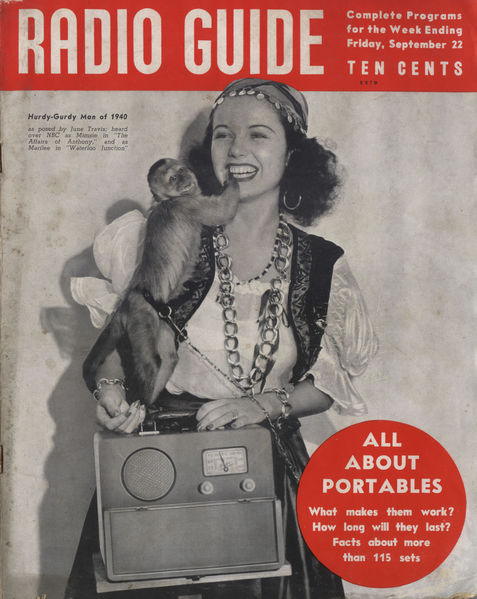Portable Radios: Root of Modern Technology
 This is where it all started: you might argue that it was the portable record player, or the Walkman, or the laptop, or the iPod, but portable personal electronics started in the 1930s with the advent of portable radios. As a revolution, the cover shows just how large the jump was from the last comparable technology. The magazine compares a person carrying a portable radio to a hurdy-gurdy street performer. The concept of carrying around a small box of audible music was unbelievably new for the time -- music boxes were one thing, but a broadcast receiver was beyond anything that had been seen before. It didn't replace anything, like the lineage from cassette to CD to MP3; it struck out in uncharted territory.
This is where it all started: you might argue that it was the portable record player, or the Walkman, or the laptop, or the iPod, but portable personal electronics started in the 1930s with the advent of portable radios. As a revolution, the cover shows just how large the jump was from the last comparable technology. The magazine compares a person carrying a portable radio to a hurdy-gurdy street performer. The concept of carrying around a small box of audible music was unbelievably new for the time -- music boxes were one thing, but a broadcast receiver was beyond anything that had been seen before. It didn't replace anything, like the lineage from cassette to CD to MP3; it struck out in uncharted territory.Battery powered equipment was not new; before mains were run to homes, everything was either battery-powered or hand-powered. The advent here is miniaturization. Vacuum tubes were the size of a fingertip and required far less electricity to run their internal parts than ever before, and smaller compact batteries had the oomph to power them. This continues to be the focus of today's portables: how much can you fit into the smallest case? The article in the magazine reads, on one hand, like it's been transcribed and word-replaced every year for the past hundred: Now you can take it with you, smaller technology improves weight and portability, new power sources get you longer operation times, includes headphones for private listening, and people are integrating it into their daily lives. The details are delightfully dated, but are easily echoed with modern technology. Celphone users can immediately sympathize with a person of 1930 seeking a a signal while deep inside a steel-structured building. People still attend sports events with a media-receiver, to not only see the event live but get up-to-the-minute commentary from outside sources. And, lastly -- a point that the article emphasizes without divining the social cost -- people demand the ability to take their personal, in-home media with them wherever they go. As the adage goes, the times may change, but people will remain the same, whether they've got a 10-pound AM radio slung over their shoulder or a fully-featured computer in their pocket.
Labels: 1930s, 1939, portable radios, radio guide magazine










